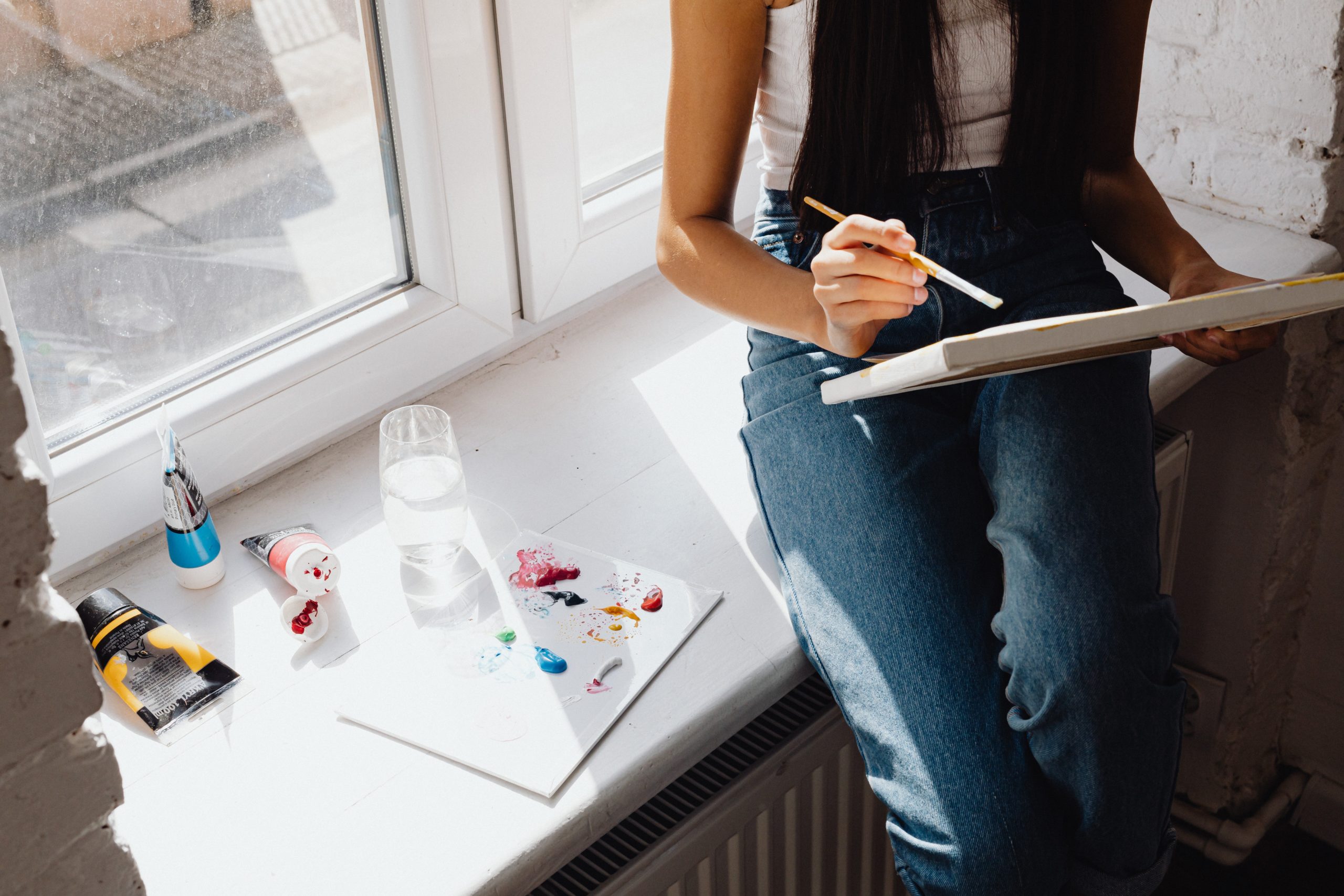Global Undergraduate Applications • Guide to Indian Liberal Arts Schools
Demystifying an Art-Related Portfolio
POSTED ON 04/20/2019 BY The Red Pen

Are you considering applying to an undergraduate programme in an artistic field? if so, you may be confused about the application process as besides the usual requirements, you will also need to create a portfolio. Whether you are applying for animation, architecture, film, fine art, game design, graphic design, illustration, interior design or any other creative or visual art-based courses, your portfolio will form a crucial part of your application. However, each programme has different requirements for the portfolio. For example, at institutes like the Istituto Europeo di Design in Italy a portfolio is not compulsory for admission to all courses, so make sure you check each school’s specifications before applying.
Here is everything you need to know on how to create a portfolio:
What exactly is a portfolio?
According to the University of the Arts London, “A portfolio is a collection of your work that shows how your skills and ideas have developed over a period of time. It demonstrates your creativity, personality, abilities and commitment and helps us to evaluate your potential.” Simply put, your portfolio is a way for admissions officers (AOs) to gauge if you are a good fit for the programme.
What do admissions officers look for in a portfolio?
Since every student has their own unique way of showcasing creativity, there are no strict rules around what would spark an AO’s interest. Generally, a portfolio should show clarity, cohesion, a defined thought process and should be aesthetically appealing. In addition, the ideas in your essay or personal statement should be reflected in your portfolio. Keep in mind that even if you are applying for a major that is outside the realm of traditional art and design, such as architecture, a good portfolio can often strengthen your application.
What are the requirements for my portfolio?
Each college and course will differ in terms of the number of pieces to be sent, media allowed and required samples, among others. For example, if you want to apply for the Bachelor of Fine Arts at the Parsons School of Design, you will need to submit eight to 12 images, while the University College London’s Bachelor of Fine Arts has no minimum requirements, but a maximum of 20. Since most colleges require about 10-20 pieces, you should create various pieces. You can use media such as drawing, painting, sculpture, fashion design, animation, performance, graphic design, jewellery design and even a video reel in your portfolio.
Some colleges, such as Boston University, indicate the samples you must submit. These include a portrait, still life and a composition of recognisable objects. Others such as Nottingham Trent University have no specific requirements. Typically, you should send your most recent work and ensure that it reflects your current interests. You should also include at least one piece from direct observation. Additionally, you can also submit sketches and unfinished or previous versions of artworks in your portfolio, as this help AOs understand your creative process. Also make sure to include a title for each image, its size, medium and date.
Along with your portfolio, some colleges may also ask you to complete an additional assignment. The Rhode Island School of Design, for example, poses three questions and asks you to create two responses for any one in a medium of your choice, while the Emily Carr University of Art + Design has a Process Project that requires you to answer three prompts by submitting one sample of your original work per prompt. After answering these artistically, you must also answer some questions in writing. Most schools will ask you to attend an interview as well if you are shortlisted.
How do I share my portfolio?
Most colleges across the US, the UK and Canada use SlideRoom to review your portfolio. Once you have applied through the Common Application, UCAS or directly to the university with your application form, personal statement and additional requirements such as English proficiency tests and standardised tests, you will either be sent a link where you can upload your portfolio or emailed more details on how you can upload your portfolio or send a digital one. If you are asked to do the latter, it will usually be either via a USB or a CD. You should also ensure that your material is neat and in a format that the college can view. Also, make sure that each file is labelled properly and ensure that it is organised in the way you want it to be viewed. Some schools may also accept a physical portfolio via mail.
Creating a portfolio may be overwhelming, so here are some general tips that you should keep in mind:
1) Make your college list:
When looking at art colleges to which you wish to apply, research each course and its objectives and ensure each one matches your goals.
2) Research the requirements of each college:
Once you’ve shortlisted your colleges, make a note of each deadline, along with their specific portfolio requirements. These could be the number of pieces, size of pictures, presentation requirements and the like. For example, the Fashion Institute of Technology requires each image to be a max of 5MB, with videos up to 250MB and PDFs up to 10MB, while the School of the Art Institute of Chicago only mentions that images have to be at least 72 dpi, while videos can be no longer than five minutes.
3) Start early:
Since some schools have flexible requirements, while others follow strict criteria, it may confuse you and lead you to procrastinate and then rush at the last minute put together a portfolio closer to submission deadlines. This is why we suggest you start working on your portfolio during your summer break between grades 11 and 12. This will give you enough time to think about and plan your portfolio clearly. It might be beneficial for you to work on more pieces than required as this will give you some choice when selecting your pieces.
4) Look at examples from other recent students:
Before you start working on your portfolio, it might be helpful for you to see recent students’ work. On its website, the Glasgow School of Arts gives examples of past portfolios for each course offered.
5) Attend open days/ portfolio days:
If you are travelling and visiting colleges, try to see if a National Portfolio Day is happening in the city you are visiting. Here, you will have the opportunity to speak to representatives from several colleges who can give you feedback on your portfolio. This might help you make a stronger application. Besides this, online portfolio reviews are available through the AICAD (Association of Independent Colleges of Art and Design) portal in SlideRoom. You can also ask your art teacher or guidance counsellor for feedback on your portfolio.
6) Plan your portfolio properly:
Colleges want to see where you are as an artist now. So including pieces from two to three years ago may hamper your chances of being admitted. Through your portfolio, you want to demonstrate your artistic range and showcase your creative ability. You need to demonstrate original ideas, your passion and your fit for the programme. Your portfolio should include pieces from several styles and media and if possible as well as something related to your degree. When choosing what goes into your portfolio, be selective and use your best and most recent pieces.
7) Present your portfolio well:
First impressions count so make sure that your portfolio creates an impact. AOs only spend about five minutes on your portfolio, so ensure each image is photographed properly and presented in an organised and coherent fashion. For example, if you are mounting your pieces on a background, they should all be in the same colour and size. Ensure that you take a close-up of the entire canvas and your layout is professional.
8) Succinctly describe each piece:
Some schools may require to describe each piece beyond just including a title. Think about this carefully and ensure you don’t ramble on about the piece. It should be clear and concise and indicative of the image.
Applying for art programmes is extremely rigorous and competitive. The acceptance rate at some of the most coveted art schools is very low, so it is crucial to understand how to develop the best possible portfolio. For more information about the application process, read our blog on everything you need to know about the Common Application here. Alternatively, if you need help regarding how we can help you with your portfolio get in touch with us.





